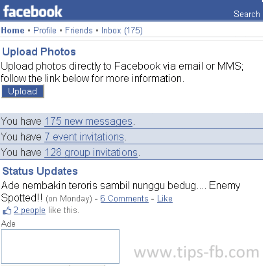

#M facebook com how to
Here’s the step-by-step guide on how to combine them all: 1. This is why you see an anonymous Facebook referrer rather than a referrer from an unknown source (direct / none) in Google Analytics. Users will stay on the temporary link shim page a few milliseconds before being redirected to the desired web page. It was a problem for Facebook because there was a huge number of users using the platform over HTTPS and lots of 3rd party analytics tools were not able to correctly record traffic coming from Facebook.įacebook solved this problem by routing the click through the link shim page that is a non-HTTPS page. This means that you’ll see that he/she came to your site directly (you’ll see direct / none in Google Analytics). If someone navigates from a HTTPS website to your HTTP website, the browser doesn’t send a referrer header (the document.referrer will be empty). Facebook wants to make your external analytics tools more accurateīy default, HTTPS websites do not send referrer data to HTTP (non-HTTPS) websites due to security reasons. Facebook wants to protect its users’ privacy and identityįacebook wants to hide personally identifiable information (PII) from third party websites and the link shim tool is used to rewrite Facebook referrers.įor example, it removes usernames from referrer URLs, before web browsers send you to external websites so that your 3rd party analytics tools (Google Analytics for example) are not able to reveal who it is that clicked on the link (meaning the owner of the 3rd party website will not know your name when you click on their link).īusinesses often use Google Analytics UTM parameters to track the performance of different marketing campaigns.

It prevents us from seeing malicious or spammy content and that’s great. when a user clicks on an external link) and if they detect a malicious website, they will give you a warning. Like mentioned before, Facebook is able to run a check at the time of a click (i.e. Facebook wants to keep you away from malicious websites There’s a number of reasons for this link shim interstitial page being served: 1. If you see lots of different referrals (l., lm., m. etc) in your reports, it doesn’t necessarily mean that you website is malicious or spammy. This is because Facebook needs to rewrite referrer data for security reasons. Keep in mind, every user who clicks on an external link on Facebook, is temporarily redirected to a link shim page, before being sent to the final URL. If everything is fine with the website you’re planning to visit, you’ll be automatically redirected from an interstitial page to the final URL. If the link you clicks looks malicious or spammy, Facebook will give you a warning. ⚠ If the system detects that the link you’ve clicked on is malicious, it redirects you to an interstitial page that warns you and gives you an option to return to Facebook. Their presence in Google Analytics indicates that your website was evaluated favourably by the Link Shim system developed by Facebook.Įvery time a link is clicked on the site, the link shim system will check that URL against a huge internal database of malicious links. L. and lm. are called Link Shim referrals.

What’s hidden behind these baffling Facebook referrals?įacebook’s primary goal is to protect its users from malicious and spammy content and that’s why they have built a powerful tool called the Link Shim. How to combine all these mysterious Facebook referrals in one?ġ.Is it worth combining all those Facebook referrals together?.What’s hidden behind these baffling Facebook referrals?Ī) What is l. / referral in Google Analytics?ī) What is lm. / referral in Google Analytics?Ĭ) What is m. / referral in Google Analytics?.

This article will show you exactly what’s hidden behind these mysterious Facebook referrals and what can be done to avoid having your Facebook data split across several rows in your reports (how to fix m/lm/l. in Google Analytics.) Yes, we’ll show you how to fix this.


 0 kommentar(er)
0 kommentar(er)
